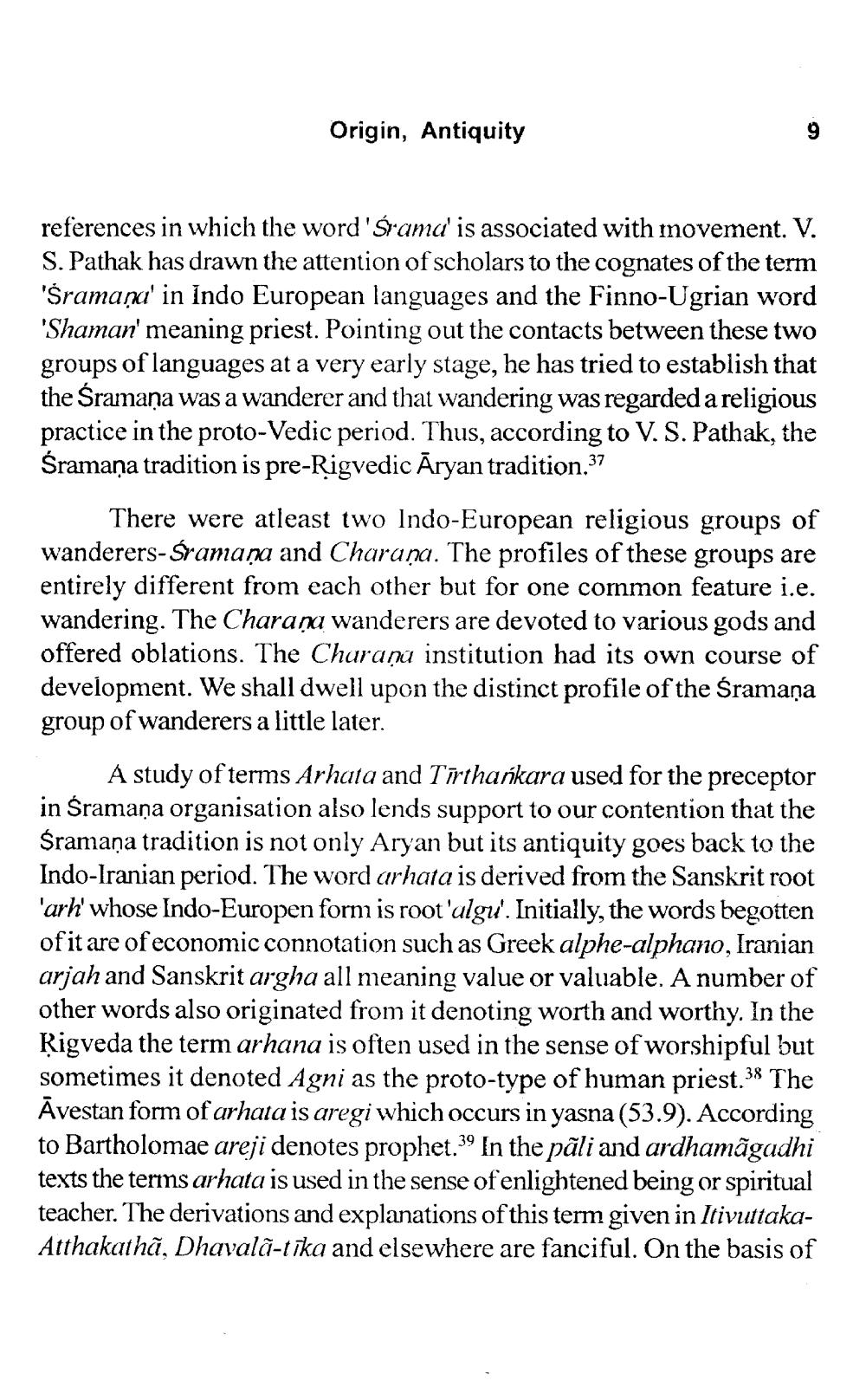________________
Origin, Antiquity
references in which the word 'Sama' is associated with movement. V. S. Pathak has drawn the attention of scholars to the cognates of the term Šramaņa' in Indo European languages and the Finno-Ugrian word 'Shaman' meaning priest. Pointing out the contacts between these two groups of languages at a very early stage, he has tried to establish that the Śramaņa was a wanderer and that wandering was regarded a religious practice in the proto-Vedic period. Thus, according to V. S. Pathak, the Śramaņa tradition is pre-Rigvedic Aryan tradition.37
There were atleast two Indo-European religious groups of wanderers-Śramaņa and Charana. The profiles of these groups are entirely different from each other but for one common feature i.e. wandering. The Charaṇa wanderers are devoted to various gods and offered oblations. The Churaņu institution had its own course of development. We shall dwell upon the distinct profile of the Sramaņa group of wanderers a little later.
A study of terms Arhata and Tirthańkara used for the preceptor in Śramaņa organisation also lends support to our contention that the Sramana tradition is not only Aryan but its antiquity goes back to the Indo-Iranian period. The word arhata is derived from the Sanskrit root 'arh' whose Indo-Europen form is root'algu'. Initially, the words begotten ofit are of economic connotation such as Greek alphe-alphano, Iranian arjah and Sanskrit argha all meaning value or valuable. A number of other words also originated from it denoting worth and worthy. In the Rigveda the term arhana is often used in the sense of worshipful but sometimes it denoted Agni as the proto-type of human priest. 38 The Āvestan form of arhata is aregi which occurs in yasna (53.9). According to Bartholomae areji denotes prophet. 39 In the păli and ardhamãgadhi texts the terms arhata is used in the sense of enlightened being or spiritual teacher. The derivations and explanations of this term given in ltivuttakaAtthakathã, Dhavalā-tīka and elsewhere are fanciful. On the basis of




